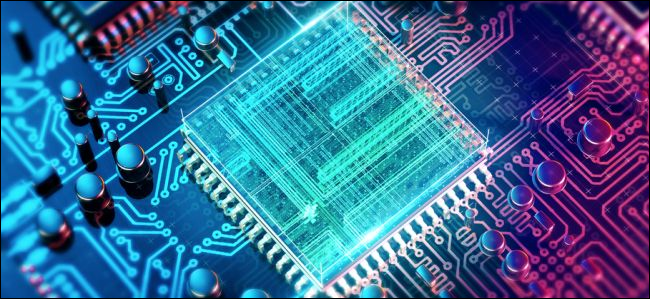Quick Links
CPUs are made using billions of tiny transistors, electrical gates that switch on and off to perform calculations. They take power to do this, and the smaller the transistor, the less power is required. "7nm" and "10nm" are measurements of the size of these transistors---"nm" being nanometers, a minuscule length---and are a useful metric for judging how powerful a particular CPU is.
For reference, "10nm" is Intel's new manufacturing process, set to debut in Q4 2019, and "7nm" is usually referring to TSMC's process, which is what AMD's new CPUs and Apple's A12X chip are based on.
So Why Are These New Processes So Important?
Moore's Law, an old observation that the number of transistors on a chip doubles every year while the costs are halved, held for a long time but has been slowing down lately. Back in the late 90s and early 2000s, transistors shrunk in size by half every two years, leading to massive improvements on a regular schedule. But further shrinking has gotten more complicated, and we haven't seen a transistor shrink from Intel since 2014. These new processes are the first major shrinks in a long time, especially from Intel, and represent a brief rekindling of Moore's law.
With Intel lagging, even mobile devices have had a chance to catch up, with Apple's A12X chip being manufactured on TSMC's 7nm process, and Samsung having their own 10nm process. And with AMD's next CPUs on TSMC's 7nm process, this marks a chance for them to jump past Intel in performance, and bring some healthy competition to Intel's monopoly on the market---at least until Intel's 10nm "Sunny Cove" chips start hitting shelves.
What The "nm" Really Means
CPUs are made using photolithography, where an image of the CPU is etched onto a piece of silicon. The exact method of how this is done is usually referred to as the process node and is measured by how small the manufacturer can make the transistors.
Since smaller transistors are more power-efficient, they can do more calculations without getting too hot, which is usually the limiting factor for CPU performance. It also allows for smaller die sizes, which reduces costs and can increase density at the same sizes, and this means more cores per chip. 7nm is effectively twice as dense as the previous 14nm node, which allows companies like AMD to release 64-core server chips, a massive improvement over their previous 32 cores (and Intel's 28).
It's important to note though that while Intel is still on a 14nm node and AMD is set to launch their 7nm processors very soon, this doesn't mean AMD's will be twice as fast. Performance doesn't scale exactly with the transistor size, and at such small scales, these numbers aren't as precise anymore. The way each semiconductor foundry measures can vary from one to another, so it's best to take them more as marketing terms used to segment products rather than exact measurements of power or size. For example, Intel's upcoming 10nm node is expected to compete with TSMC's 7nm node, despite the numbers not matching up.
Mobile Chips Will See the Biggest Improvements
A node shrink isn't just about performance though; it also has huge implications for low-power mobile and laptop chips. With 7nm (compared to 14nm), you could get 25% more performance under the same power, or you could get the same performance for half the power. This means longer battery life with the same performance and much more powerful chips for smaller devices since you can effectively fit twice as much performance into the limited power target. We've already seen the A12X chip from Apple crushing some older Intel chips in benchmarks, despite being only passively cooled and packed inside a smartphone, and that's just the first 7nm chip to hit the market.
A node shrink is always good news, such as the move to 5nm chips, as faster and more power-efficient chips affect nearly every aspect of the tech world. 2019 will be an exciting year for tech with these latest nodes, and it's good to see Moore's law isn't quite dead yet.



